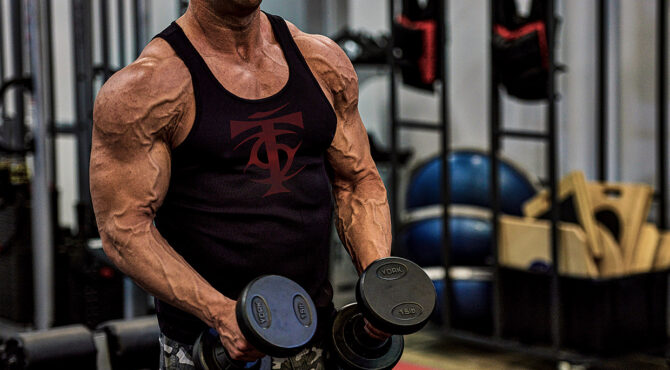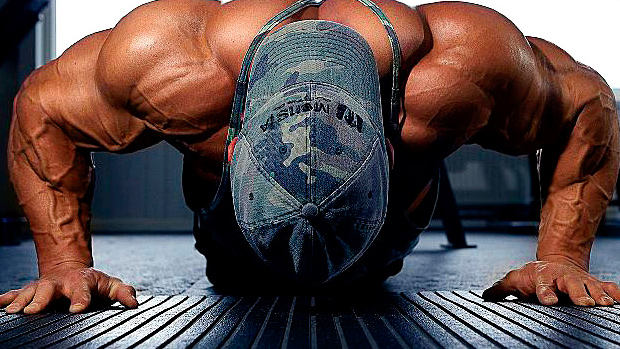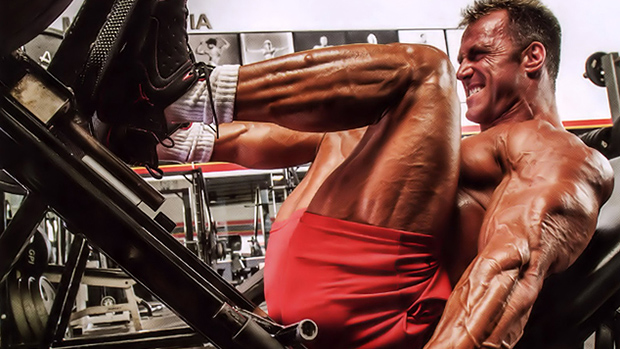Are Isolation Exercises Required?
There are three body parts that people argue about when it comes to direct training: abs, calves, and arms. Should you isolate them, or are the big lifts enough to build these smaller muscle groups?
Here's the truth: Exercises are meant to stimulate either a muscle or a group of muscles to build them or make them stronger.
- A muscle that needs more stimulation to grow or get stronger should get more isolation work.
- A muscle that responds easily or doesn't need to be developed much more (to get the visual impact you're after) won't need the same amount of work.
That's the short answer. If you want more info, dive into these hotly debated muscle groups and learn how to train yours.

Some experts claim there's no need for direct abdominal work, especially if your training includes lifts where the core is heavily involved. Here are the main arguments you'll get from them, plus some reasonable rebuttals:
Argument 1
The big basic lifts (deadlifts, squats, Olympic lifts, overhead press, etc.) and some assistance exercises involve significant trunk stabilization, which involves the core muscles. These lifts are enough to get the abdominal development you desire.
Rebuttal
The big lifts also involve the triceps, biceps, and delts, yet people rarely tell us to avoid training these muscles directly. In fact, because abs are involved in the performance of the basic lifts, isn't that an argument FOR direct ab work? Wouldn't you want to strengthen every muscle that plays a significant role in an exercise if you're trying to maximize its performance?
Granted, not everyone needs the same amount of core strength to perform optimally on the big lifts. The longer your torso is, the more abdominal, oblique, and lower back strength you need. If you have long legs and a short torso, you might not need as much direct ab work.
Plus, you could argue that the role the abs play in those big lifts can improve the capacity of the core to create rigidity, though they might not be enough to promote a thickening of the rectus abdominis muscle bellies that lead to more "6-pack" definition.
Argument 2
Everybody has abs; it's only a matter of getting lean enough to see them. A skinny guy can have abs even if he doesn't train them.
Rebuttal
Yes, everybody has abs, just like everybody has pecs. But that doesn't mean they're developed enough to show. There are plenty of competitive bodybuilders throughout history that didn't have good abdominal separation despite very low levels of body fat.
Ab separation can be, in part, genetic, but it can also be improved via training. If you increase the thickness of the rectus abdominis (the "packs"), through direct ab work – ideally against resistance – you'll increase the contrast between the "packs" and the tendinous tissue between them, giving you more abdominal separation. It'll also make your abs visible at a higher level of body fat.
To be fair, not everybody needs direct ab work. Some really do have sufficient natural development to have good-looking abs when they're lean. But claiming that nobody needs to train them directly is simply false.
Argument 3
If you're not close to being lean, why train them? You won't see them anyway.
Rebuttal
It can be demotivating to train abs if you know that you won't be able to see them. But there are other reasons to have stronger abs, including better performance on the big lifts and a reduction in the risk of back pain, especially if you spend most of the day seated.
Now, if you don't focus on maximizing performance on the big lifts, the stimulation you get from your regular exercises might be enough for you.
Argument 4
Trunk flexion work won't improve performance on the big lifts because that's not the function of the core in those exercises. In fact, training trunk flexion could actually hurt performance.
Rebuttal
I understand that trunk flexion function – the type of movement you use to target the rectus abdominis, like the cable crunch – is not specific to what you're asking the abs to do during the big lifts.
I'll also be the first to say that drills like farmer's walks and Zercher carries have a lot more transfer to the performance of a squat or a deadlift because the function of the core muscles (fixating the torso, creating rigidity, and increasing intra-abdominal pressure) is the same as in the big lifts.
But not everyone has the capacity to contract and control the abs to do loaded carries with proper torso rigidity. And if you can't do it properly, you might be doing more harm than good by reinforcing bad patterns.
Targeted/isolated ab work might not be specific to the function of the abs during the big lifts, but that's not why we do it. It's to learn to feel, contract and control the abs while also increasing their contractile strength.
Once you have that, you can focus on doing more transferable work with great benefit. Again, if you already have great abdominal contraction and control, you might not need direct targeted work.
As you can see, the answer is never black or white. People who claim that everyone needs to do direct abdominal work are dead wrong. And people who claim that nobody needs it are also dead wrong. It's a matter of assessing your needs objectively.

I'm one of those coaches who never trains calves directly or includes them in clients' programs. In my 23-plus years of coaching, I've had no more than two or three people train calves directly. All of them were competitive bodybuilders.
Why? These reasons...
1. Calves have the lowest trainability of all muscles.
"Trainability" refers to the capacity of a muscle to gain size. It's not impossible to build bigger calves, but the amount of muscle growth you can get is fairly small. And if you select the appropriate main exercises, you won't miss out on much by not isolating calves.
Not to mention, your chances of building big calves depends on your genetics and tendon length. You'll notice that few sprinters have big calves. That's because it's an advantage for speed to have a long tendon and shorter muscle belly. Sprinters do a ton of work that should lead to big calves, but they're not born that way.
2. Besides the big lifts, most training programs I write include stuff like high pulls (or Olympic lift variations), farmer's walks, Prowler pushing, and sled dragging.
All of these are effective at developing the calves as much as they can be developed. There's also lots of jumping and some sprinting, which can help too.
If you can't build at least decent calves from these exercises, then having big calves is likely not in the cards, regardless of the amount of isolation work you do.
3. Very few people have a weak mind-muscle connection with their calves or are inefficient at contracting them maximally.
That's because we all have plenty of experience using our calves: walking, standing, running, and jumping. Contrary to the abs, the skill of properly contracting the calves is rarely the issue.
One of the main purposes of isolation exercise is to improve your mind-muscle connection with the muscle you're targeting and improve your capacity to maximally contract it. That said, if you do direct calf training (properly), you can make your calves bigger and stronger.
Granted, if your small calves cause you some form of mental trauma, sure, work on them. But it's a matter of return on your investment: calves will give you a very small amount of growth for the effort you put in. I prefer to spend volume elsewhere.

If you've been lifting long enough, you might remember the "anti-arm work" training philosophy. It was popular among minimalist coaches, Chad Waterbury being a good example of someone who wrote extensively about how to build your arms without isolation work. Their logic? If you're already doing plenty of pulling and pushing, the biceps and triceps will get enough stimulation to grow.
On the surface, it might be somewhat supported by science since several compound movements have a similar muscle activation for biceps and triceps as their respective isolation exercises. For example, vertical pulling exercises can activate the biceps much like curls. And dips can activate the triceps better than many isolation exercises. Movements like a bench press and its variations have a similar effect on the triceps as skull-crushers.
This might seem to support the belief that direct arm training isn't necessary. However, consider the following:
1. Muscle "activation" doesn't mean more tension or more stimulation.
It just means more motor units are turned on, which is the first step. But then, the amount of tension produced in the muscle, as well as how much tension is present while the muscle is lengthened, matters even more. Basically, think of hypertrophy work as stretching a muscle while it's producing as much tension as possible.
Why is that relevant? Let's take vertical pulling exercises: chin-ups and lat pulldowns. The biceps never reach a lengthened/stretched position. To fully stretch the biceps, it needs to be by your side, behind your body's mid-line. In a vertical pull, your arms are above you when the muscles are at their longest, which prevents maximal stretching. This means activation isn't everything.
2. The body has natural biases based on limb length and proportions.
People with short limbs will use their biceps and triceps more during pulling and pressing; those with longer limbs will do the opposite. Claiming that nobody needs direct arm work is myopic, but so is saying that everyone does.
When you look at the pros and cons of arm training you'll be able to figure out what's best for you.
Based on goals or body structure, you might not need any direct arm work, you might need a small amount, or you might need to spend a lot of volume on your arms if you're looking to get exaggerated development there.
When selecting the exercises, there are two main things to consider:
- What are you trying to achieve?
- Where will you invest your training volume?
Your body has a limited capacity to tolerate training stress; you can't just blindly use a large amount of work on every muscle. So you must carefully select where to invest your training volume.
If your main goal is strength or athletic performance, you likely don't need to use a lot of isolation exercises. Your focus should be on the big basic movement patterns (squat, hinge, press, pull, carry) and the best versions of those patterns for your body type.
For strength or performance, invest more volume on mastering and improving the big lifts. This makes more sense than bombarding your body with tons of isolation work. Isolation exercises should be used only to fix weaker muscles that are holding back your performance on the big lifts.
If your main goal is aesthetics or maximal hypertrophy, the classic versions of the big lifts are not going to be enough to reach your objective. Your natural muscle bias will lead to unequal development of the various muscles involved in the big lifts. And by their nature, big multi-joint exercises are rarely the best option to maximize the development of any one specific muscle.
If building an aesthetic physique is your goal, your challenge will be to decide which muscles you need to invest more time and isolation work on. Remember, there's no logical reason and no physiological/biomechanical need to do the same number of isolation exercises for every major muscle group.





